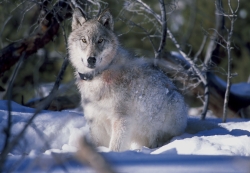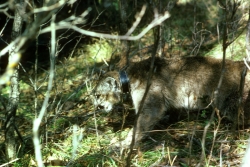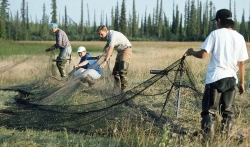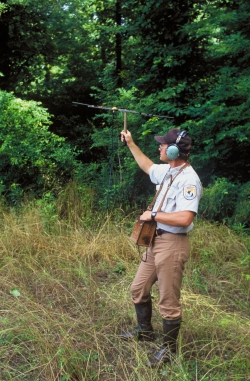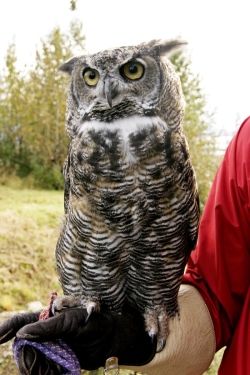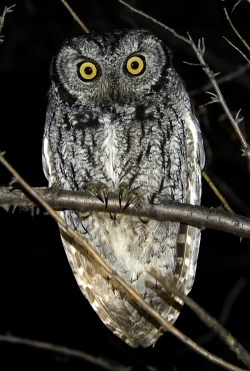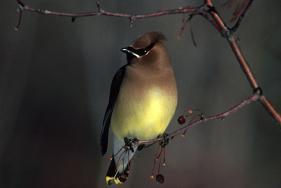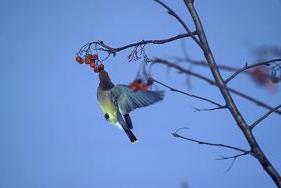
Courtesy of and
Copyright © 2008 Kent R. Keller
As found on UtahBirds.org
The wild goose chase, the nocturnal tipping of cows and the snipe hunt are all good-natured tricks to play on gullible friends. Geese and cows are real, of course, but so is the snipe, a chunky relative of sandpipers. Its name may be the “common snipe”, but during most of the year, snipe encounters in Utah are anything but common. A few times annually, I flush snipe unexpectedly from the margins of a montane beaver pond, a patch of cattails along a suburban creek, or around valley springs and marshes, any wet place that gives the snipe mud that to probe for invertebrates and vegetative cover for camouflage. But come spring, the hunt for snipe is more hopeful, as I can listen for the male’s aerial courtship displays high above wet meadows and marsh margins. You aren’t likely to see him looping about at first, but when he periodically dives, the wind vibrating his outer tail feathers creates this distinctive winnowing sound:
[Audio: Common Snipe courtesy and copyright 2006 Kevin Colver available from “Songbirds of Yellowstone” https://www.wildsanctuary.com/the_wildstore.html and westernsoundcsape.org]

Courtesy of and Copyright
© 2004 Milton G. Moody
As found on UtahBirds.org
If you hear that sound near dusk or dawn, scan the skies, for you have found the elusive snipe. Wait a bit and he or his mate may perch atop a nearby wooden fencepost, a comical looking bird with its short legs and long delicate bill. A century ago, the snipe hunt was also real; market hunters devastated snipe numbers. Since then, snipe persist wherever their marshes, wet meadows and bogs have not been drained or filled. When next you are out someplace soggy to admire the spectacular plumage of spring ducks, remember to listen for the aerial display of the common snipe.
This is Linda Kervin for Bridgerland Audubon Society.
Credits:
Pictures: Courtesy and Copyright © 2004 Milton G. Moody and Copyright © 2008 Kent R. Keller, as found on utahbirds.org
Also Courtesy Digital Library, US FWS, Photographer W.F. Kubichek
Bird Recordings: Kevin Colver
Text: Linda Kervin, Bridgerland Audubon Society
Additional Reading:
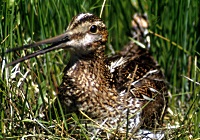
Courtesy US FWS Digital Library
W.F. Kubichek, Photographer
Wilson’s snipe, Gallinago delicata, Utah Conservation Data Center, Utah Division of Wildlife Services, https://dwrcdc.nr.utah.gov/rsgis2/Search/Display.asp?FlNm=gallgall
Diet composition of wintering Wilson’s Snipe.(SHORT COMMUNICATIONS)(Repo… An article from: The Wilson Journal of Ornithology by Jon T. McCloskey, Jonathan E. Thompson, and Bart M. Ballard, Digital 2009, https://www.amazon.com/composition-wintering-Wilsons-Snipe-COMMUNICATIONS/dp/B002HMJOUG
Wilon’s Snipe, Utah Bird Profiles, UtahBirds.org, https://www.utahbirds.org/birdsofutah/Profiles/CommonSnipe.htm

